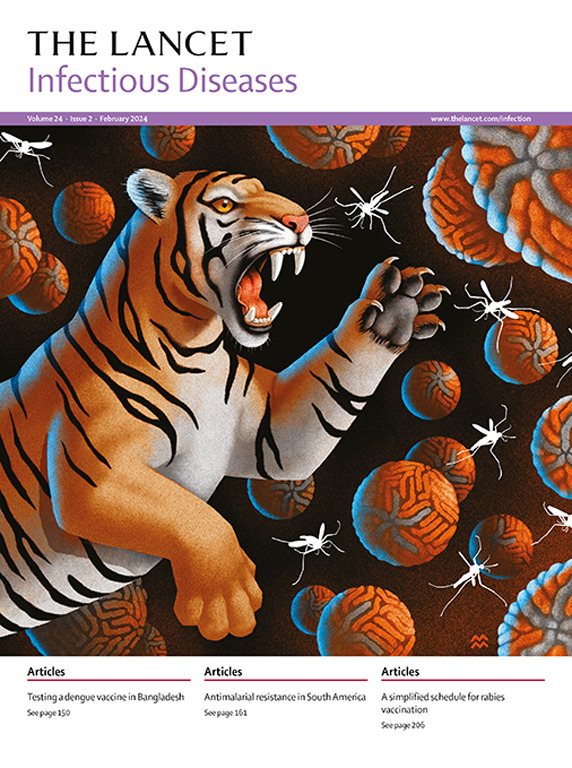Research in brief
IF 36.4
1区 医学
Q1 INFECTIOUS DISEASES
引用次数: 0
Abstract
Section snippets
Neutralising antibodies for hepatitis E infection
No specific antiviral therapies currently exist for hepatitis E virus (HEV) infection. Using flow cytometry and X-ray crystallography, researchers isolated and characterised the antibodies produced in convalescent patients 1 year after clearing acute HEV infection. They noted glycan-sensitive broadly neutralising antibodies that interacted with the non-glycosylated form of the viral capsid protein pORF2. The antibodies neutralised primary isolates derived from 14 patients and wereZika virus vertical transmission
The mechanisms underlying Zika virus’ propensity for vertical transmission are incompletely understood. A study using cultured human trophoblast cell lines and mass spectrometry suggested that one mechanism might be through the formation of tunnelling nanotubes in placental trophoblasts in response to Zika virus infection, driven by the N-terminal 1-50 amino acids of Zika virus non-structural protein 1 (NS1). The tunnelling nanotubes served as conduits for transmitting the virus betweenMale partner treatment for bacterial vaginosis
An open-label randomised trial in Australia enrolled 164 adult male–female monogamous couples in which the woman had diagnosed symptomatic bacterial vaginosis. In 81 couples, both partners received treatment (the woman given first-line antimicrobial agents, and the man given oral metronidazole 400 mg tablets and 2% topical clindamycin cream applied to penile skin, both twice daily for 7 days). In 83 couples, only the woman received antimicrobial treatment (standard care). During the 12-weekInvasive fungal infection in preterm neonates
A randomised trial in Egypt assessed the efficacy of micafungin versus amphotericin B deoxycholate for treating invasive fungal infections in neonates aged less than 36 weeks’ gestation in a newborn intensive care unit. 56 neonates with signs of invasive fungal infection and a positive fungal culture first received fluconazole for 1 week, followed by 14 days of either micafungin 8 mg/kg per day or amphotericin B 1 mg/kg per day. After 14 days, 18 (64·3%) of 28 neonates given micafungin hadFecal microbiota for recurrent Clostridioides difficile infection
The safety of the first fecal microbiota-based live therapeutic (fecal microbiota, live-jslm) to be approved by the US Food and Drug Administration for preventing recurrent C difficile infection was assessed in a prospective observational study that included people with comorbidities such as irritable bowel syndrome. 697 adults in the USA and Canada with a documented diagnosis of recurrent C difficile infection and confirmed use of standard-of-care antibiotics received a single rectal 150 mL求助全文
约1分钟内获得全文
求助全文
来源期刊

Lancet Infectious Diseases
医学-传染病学
CiteScore
60.90
自引率
0.70%
发文量
1064
审稿时长
6-12 weeks
期刊介绍:
The Lancet Infectious Diseases was launched in August, 2001, and is a lively monthly journal of original research, review, opinion, and news covering international issues relevant to clinical infectious diseases specialists worldwide.The infectious diseases journal aims to be a world-leading publication, featuring original research that advocates change or sheds light on clinical practices related to infectious diseases. The journal prioritizes articles with the potential to impact clinical practice or influence perspectives. Content covers a wide range of topics, including anti-infective therapy and immunization, bacterial, viral, fungal, and parasitic infections, emerging infectious diseases, HIV/AIDS, malaria, tuberculosis, mycobacterial infections, infection control, infectious diseases epidemiology, neglected tropical diseases, and travel medicine. Informative reviews on any subject linked to infectious diseases and human health are also welcomed.
 求助内容:
求助内容: 应助结果提醒方式:
应助结果提醒方式:


